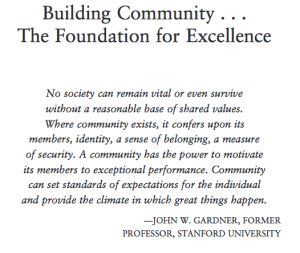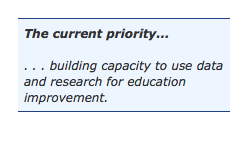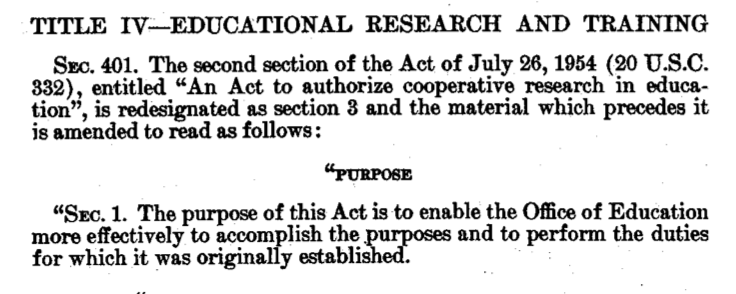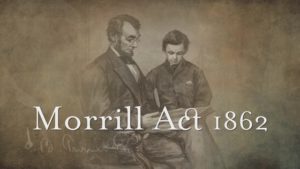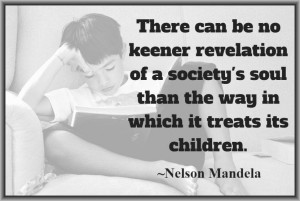 Are Americans ready to declare their devotion to ensuring that the public education system continues to exist and prosper? We have rallied to support our troops, but, failed to consistently support our public schools. We have questioned why we always have money for war, but, we have not demanded the same for education.
Are Americans ready to declare their devotion to ensuring that the public education system continues to exist and prosper? We have rallied to support our troops, but, failed to consistently support our public schools. We have questioned why we always have money for war, but, we have not demanded the same for education.
Have we ever made a declaration of devotion to a national goal for public education? In the 1960’s, Francis (Frank) Keppel, the architect of the Elementary and Secondary Education Act wrote something similar to what follows here, but his words were never heard nationwide.
∞∞∞∞
A Declaration of Devotion to Educational Excellence
We the People of the United States, in Order “to strengthen and improve educational quality and educational opportunity in this Nation’s elementary and secondary schools” will act in accordance with the principles and practices that will guide and support our efforts to ensure excellent education for all.
Our goal is to achieve and maintain an education system that offers maximum opportunities for all students to learn while holding the highest expectations for the individual pupil and all those that are responsible for supporting students. This system will continuously strive to improve public educations’ role in serving the needs of our free, fair, and democratic republic.
To accomplish our goal, the expectation set for the system is that all those governing, employed by, and voluntarily supporting our public schools will function based on mutual respect for each other and all stakeholders in an effort to earn and maintain the trust of the People.
We Recognize that it is in the best interest of the nation to assure equal opportunity to be educated to the fullest of an individual’s potential and that goal can best be realized by maintaining a strong and effective public education system.
→ Action → Provide equitable and adequate resources with the knowledge, guidance, and oversight to use those resources wisely to solve problems.
We Recognize that to improve means we must consistently and accurately assess current conditions of our schools based on appropriate data that aligns with our national goals.
→ Action → Establish a report card for the nation that uses indicators of what the public deems important and make the findings know in an annual State of the Nation’s Schools with corresponding State of Our State schools reports.
We Recognize that to ensure the strengthening and improvement of local schools requires a strong and capable Department of Education nationally and in every state.
→ Action → Reaffirm the commitment of the U.S. Department of Education to its original purposes, identify the states seen as chronically low-performing, and support the training of those state department personnel in effective school improvement processes.
We Support community organizing efforts to engage parents and the community in youth support activities, programs, and their schools.
→ Action → Enlist the Cooperative Extension Service to educate and train volunteers, disseminate proven practices, and assist in coordinating efforts to use locally available resources more efficiently and effectively.
We Support research, development, and diffusion of effective practices.
→Action → Invest in our existing public institutions of higher education focusing on improving teacher, counselor, and leader education; and reinvest, reclaim, and refocus the function of regional education laboratories to maintain integrity, relevance, and responsiveness in research aimed at seeking solutions for communities’ education problems; and establish the outreach and extension of research findings to ensure their use in educational improvement practices.
We Support those schools that have been identified as chronically low-performing by providing federal emergency assistance, immediately, in cooperation with state and local education agencies.
→ Action → Provide a federal support team (also called “success teams”) to help facilitate school and community members in a guided improvement process.
We will:
- maintain local responsibility shared through the democratic governing of schools,
- depend on state accountability with shared knowledge of measurable results and costs,
- and, rely on federal oversight, guidance, and support through the practices of the U.S. Department of Education and through responsive and responsible federal policy set by Congress and the President of the United States.
Federal education law must be written with the understanding that effective execution of the law depends on local education personnel with public participation and support. In order for all who wish to assist their schools in fulfilling the promise of maximum educational opportunities with the highest expectations, the Elementary and Secondary Education Act must be reduced, simplified, and made to once again address the needs of the educationally deprived children of this nation.
(This is a modified excerpt from addendum 1 of The Crucial Voice of the People, Past and Present: Education’s Missing Ingredient 2nd edition © 2012 Victoria M. Young)
I hope all of you will take the time this July 4th holiday to reflect on what is important in your lives and crucial to the life of this nation.
Happy Independence Day, America!




